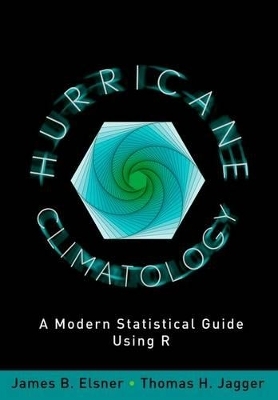
Hurricane Climatology
Oxford University Press Inc (Verlag)
978-0-19-982763-3 (ISBN)
James B. Elsner is the Earl and Sophia Shaw Professor of Geography at Florida State University where he teaches applied spatial statistics and hurricane climatology. Dr. Elsner is President and CEO of Climatek; a company that develops software for hurricane-risk models. His research interests include the changing nature of hurricane risk. He has written more than 110 research articles and two books. Dr. Thomas Herbert Jagger is Vice President of Climatek and independent researcher. He has written more than 25 papers advancing the use of statistical analysis in weather and climate. As Vice president of Climatek he has incorporated Bayesian analysis and extreme value modeling into his research on hurricane climatology and hurricane risk analysis.
I Software, Statistics, and Data ; 1 Hurricanes, Climate, and Statistics ; 1.1 Hurricanes ; 1.2 Climate ; 1.3 Statistics ; 1.4 R ; 1.5 Organization ; 2 R Tutorial ; 2.1 Introduction ; 2.2 Data ; 2.2.1 Small amounts ; 2.2.2 Functions ; 2.2.3 Vectors ; 2.2.4 Structured data ; 2.2.5 Logic ; 2.2.6 Imports ; 2.3 Tables and Plots ; 3 Classical Statistics ; 3.1 Descriptive Statistics ; 3.2 Probability and Distributions ; 3.3 One-Sample Tests ; 3.4 Wilcoxon Signed-Rank Test ; 3.5 Two-Sample Tests ; 3.6 Statistical Formula ; 3.7 Compare Variances ; 3.8 Two-Sample Wilcoxon Test ; 3.9 Correlation ; 3.10 Linear Regression ; 3.11 Multiple Linear Regression ; 4 Bayesian Statistics ; 4.1 Learning About the Proportion of Landfalls ; 4.2 Inference ; 4.3 Credible Interval ; 4.4 Predictive Density ; 4.5 Is Bayes Rule Needed? ; 4.6 Bayesian Computation ; 5 Graphs and Maps ; 5.1 Graphs ; 5.2 Time series ; 5.3 Maps ; 5.4 Coordinate Reference Systems ; 5.5 Export ; 5.6 Other Graphic Packages ; 6 Data Sets ; 6.1 Best-Tracks ; 6.2 Annual Aggregation ; 6.3 Coastal County Winds ; 6.4 NetCDF Files ; II Models and Methods ; 7 Frequency Models ; 7.1 Counts ; 7.2 Environmental Variables ; 7.3 Bivariate Relationships ; 7.4 Poisson Regression ; 7.5 Model Predictions ; 7.6 Forecast Skill ; 7.7 Nonlinear Regression Structure ; 7.8 Zero-Inflated Count Model ; 7.9 Machine Learning ; 7.10 Logistic Regression ; 8 Intensity Models 211 ; 8.1 Lifetime Highest Intensity ; 8.2 Fastest Hurricane Winds ; 8.3 Categorical Wind Speeds by County ; 9 Spatial Models ; 9.1 Track Hexagons ; 9.2 SST Data ; 9.3 SST and Intensity ; 9.4 Spatial Autocorrelation ; 9.5 Spatial Regression Models ; 9.6 Spatial Interpolation ; 10 Time Series Models ; 10.1 Time Series Overlays ; 10.2 Discrete Time Series ; 10.3 Change Points ; 10.4 Continuous Time Series ; 10.5 Time Series Network ; 11 Cluster Models ; 11.1 Time Clusters ; 11.2 Spatial Clusters ; 11.3 Feature Clusters ; 12 Bayesian Models ; 12.1 Long-Range Outlook ; 12.2 Seasonal Model ; 12.3 Consensus Model ; 12.4 Space-Time Model ; 13 Impact Models ; 13.1 Extreme Losses ; 13.2 Future Wind Damage ; A Functions, Packages, and Data ; A.1 Functions ; A.2 Packages ; A.3 Data Sets ; B Install Package From Source
| Erscheint lt. Verlag | 28.3.2013 |
|---|---|
| Zusatzinfo | 85 color; 45 black and white |
| Verlagsort | New York |
| Sprache | englisch |
| Maße | 236 x 157 mm |
| Gewicht | 771 g |
| Themenwelt | Mathematik / Informatik ► Mathematik ► Angewandte Mathematik |
| Mathematik / Informatik ► Mathematik ► Computerprogramme / Computeralgebra | |
| Naturwissenschaften ► Geowissenschaften ► Meteorologie / Klimatologie | |
| ISBN-10 | 0-19-982763-X / 019982763X |
| ISBN-13 | 978-0-19-982763-3 / 9780199827633 |
| Zustand | Neuware |
| Haben Sie eine Frage zum Produkt? |
aus dem Bereich


